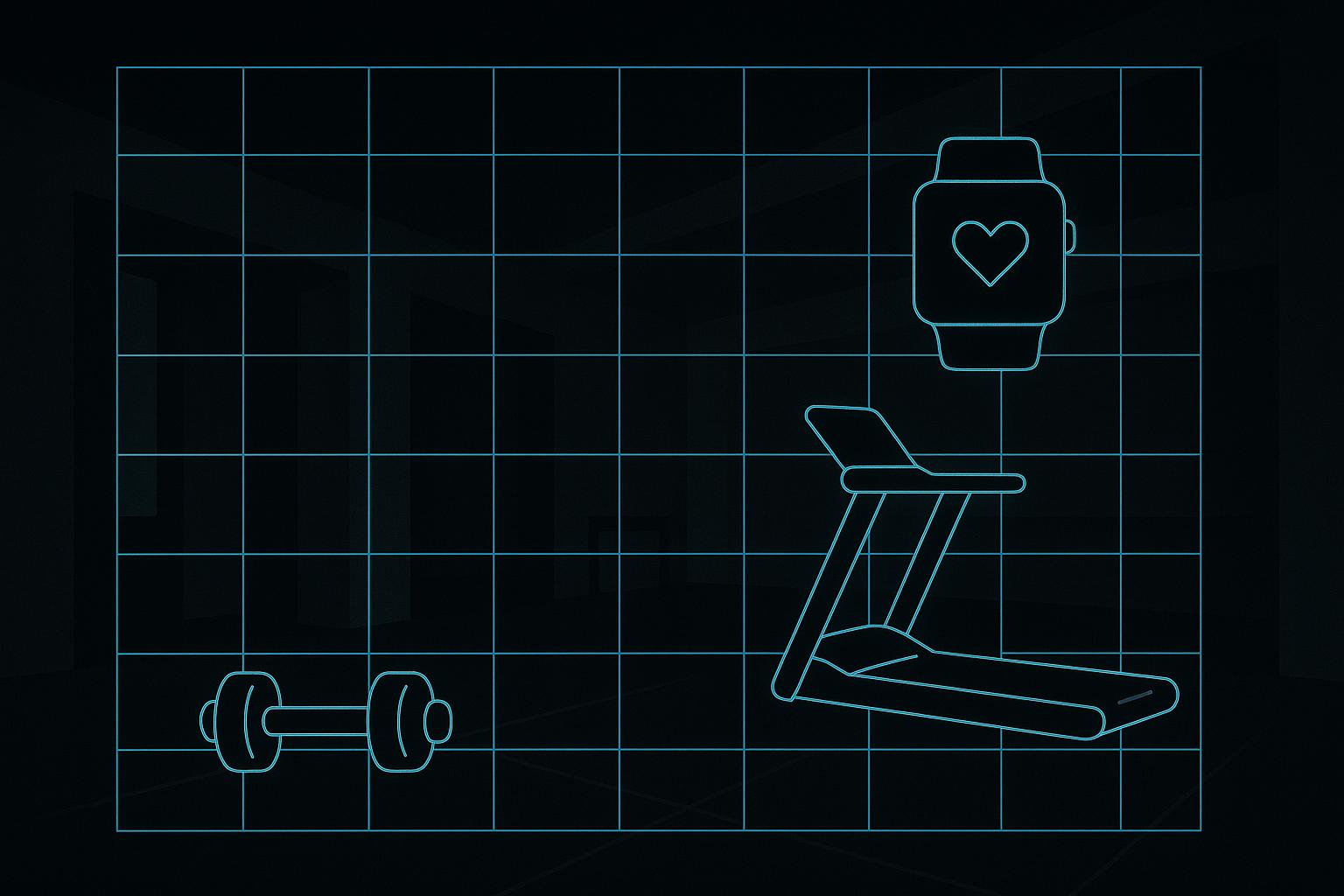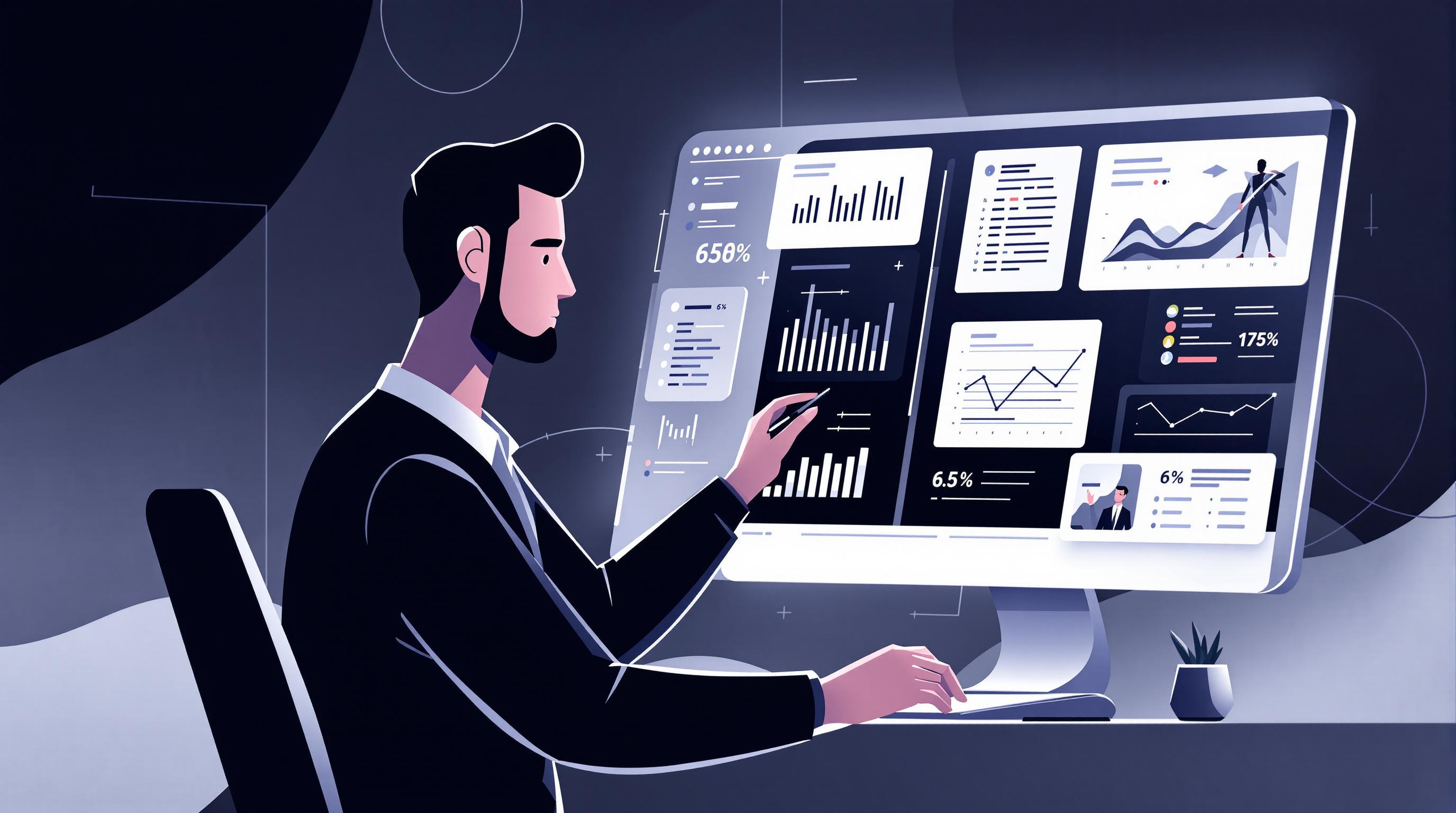Web scraping is changing how we monitor public health. It helps collect real-time data, track disease outbreaks, and analyze health trends faster than ever. By automating data collection from websites, researchers and policymakers can access critical information to respond to health crises effectively. Here's why it matters:
- Faster Data Collection: Automation enables real-time updates for quicker responses to health threats like pandemics.
- Wide Data Coverage: Tools can gather information from diverse sources, even across countries.
- Improved Analysis: Historical and current data help researchers identify trends and gaps in healthcare.
Key Tools for Web Scraping:
- Beautiful Soup: Ideal for static websites, like tracking test kit availability.
- Selenium: Best for dynamic, JavaScript-heavy sites, such as ICU bed monitoring.
- Scrapy: Perfect for large-scale projects, like opioid crisis tracking.
Challenges:
- Cleaning messy data with automated validation.
- Navigating complex websites with tailored strategies.
- Ensuring privacy and ethical standards during data collection.
Web scraping is a powerful tool for public health, but it requires balancing technical efficiency with ethical responsibility to protect privacy and ensure accuracy. By using the right tools and practices, we can improve health monitoring and decision-making.
How to scrap data from websites using python panda library ...
Web Scraping Tools
The right tools can make a huge difference when it comes to collecting public health data. Let’s dive into three Python libraries that are often used for this purpose: Beautiful Soup, Selenium, and Scrapy.
Using Beautiful Soup
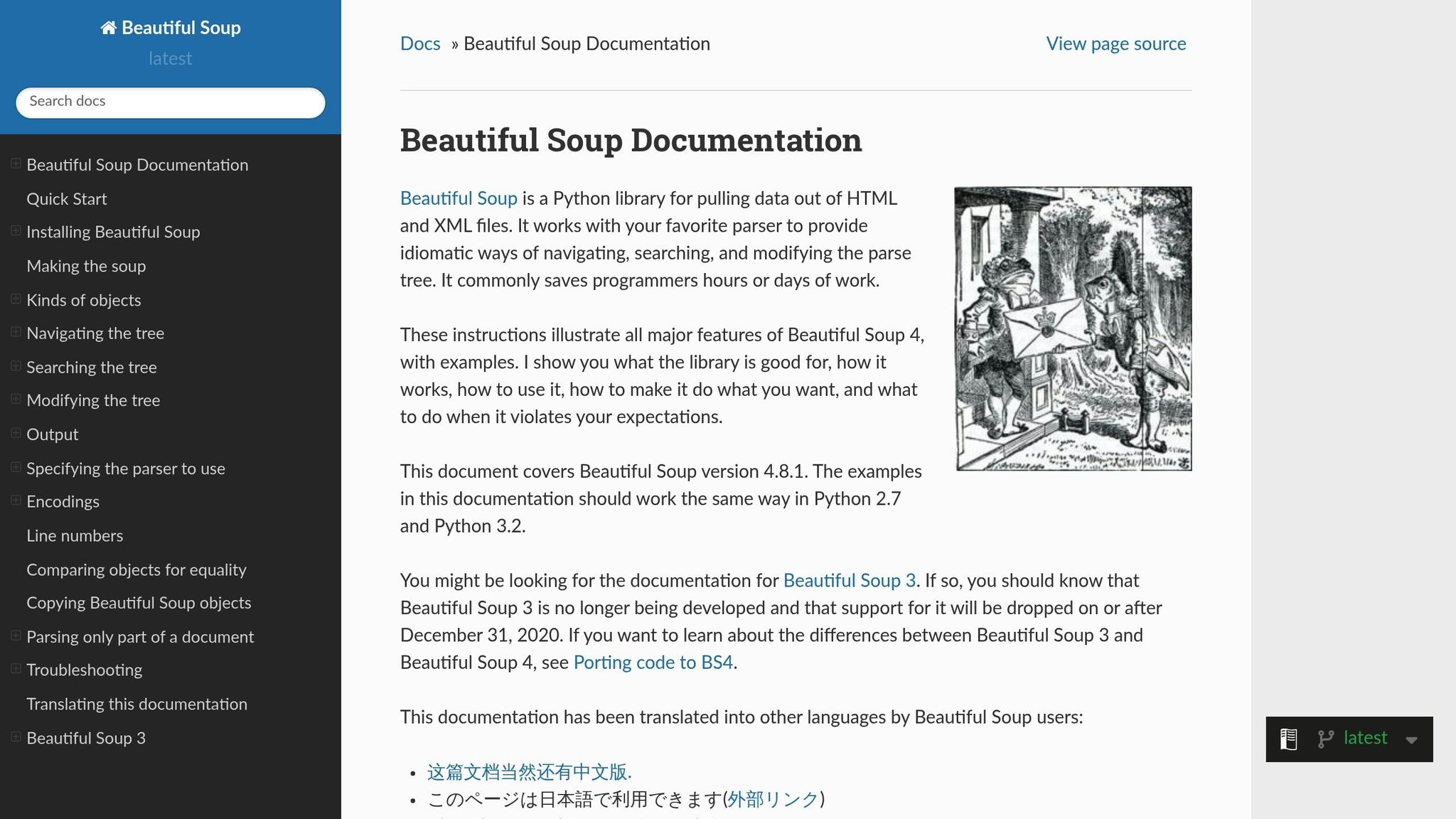
Beautiful Soup is great for pulling data from static HTML pages. For example, tests on 2024 California health data revealed that it can process 1,000 static pages in just 42 seconds. Walgreens also used this tool to track COVID-19 test kit availability across 12,000 store locations, which helped them manage their inventory more effectively. However, for websites with dynamic content, Selenium is a better choice.
Working with Selenium
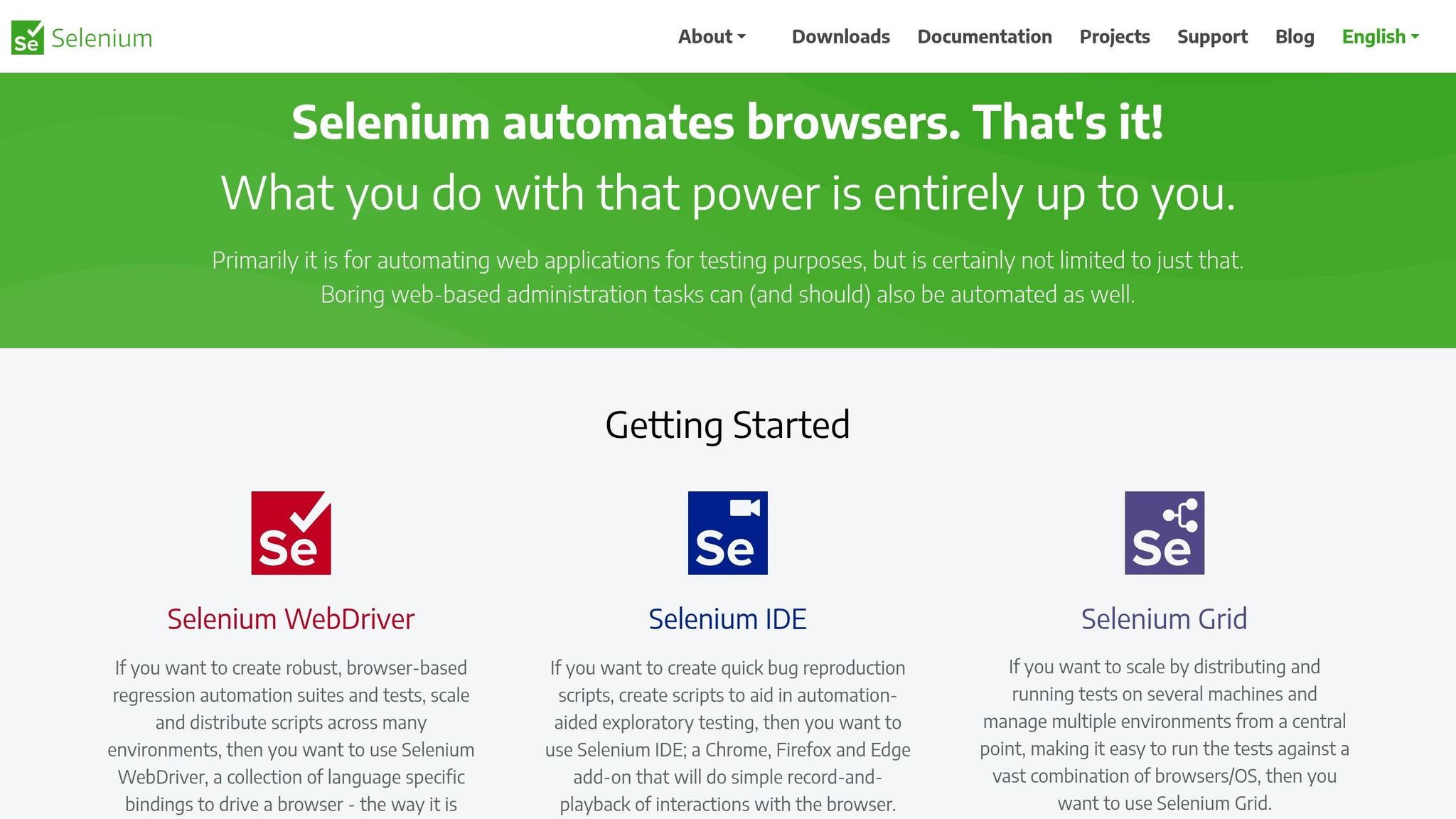
Selenium shines when dealing with JavaScript-heavy websites. In 2023, researchers at Johns Hopkins University used it to monitor real-time ICU bed availability. Its ability to automate interactions with complex healthcare dashboards makes it incredibly useful. For even larger datasets, though, Scrapy steps in as a more powerful option.
Building with Scrapy
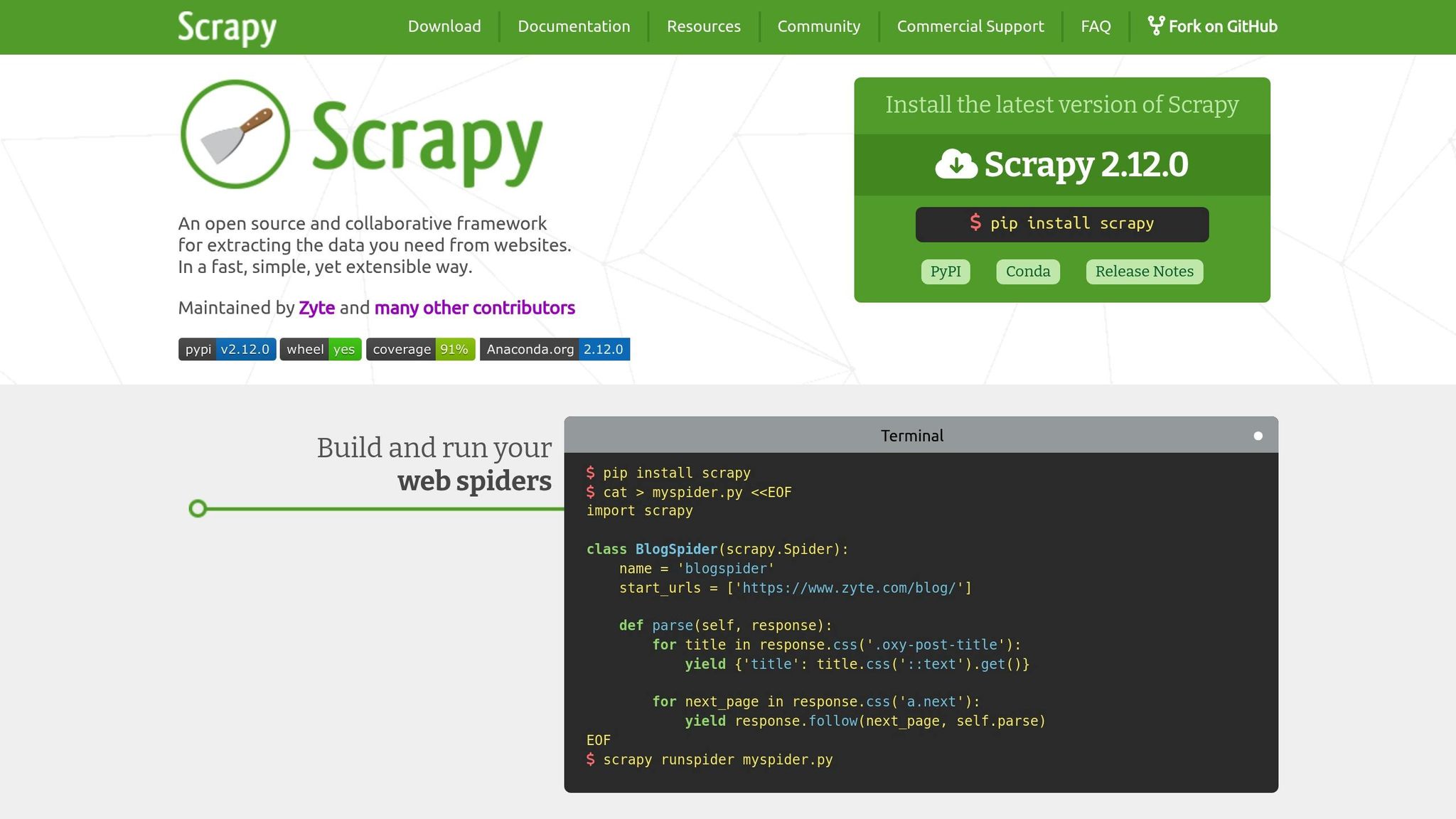
Scrapy is designed for large-scale data collection. A great example is the CDC's 2024 opioid crisis project, where Scrapy was used to gather daily data from 2,300 county health websites in just 11 minutes. Its concurrent processing and built-in validation features helped reduce data errors by 78% in tracking opioid prescriptions. It can even flag unusual data points, such as vaccination rates that fall outside the 0-100% range.
"Scrapy's asynchronous architecture allowed us to monitor COVID-19 metrics across 140 global health organizations simultaneously", says Dr. Michael Torres, Lead Data Scientist at the CDC. "This real-time capability proved crucial for early outbreak detection."
Public Health Use Cases
Web scraping has transformed how public health data is collected and analyzed. It plays a crucial role in areas like tracking disease outbreaks, monitoring vaccinations, and studying health behaviors.
Disease Outbreak Monitoring
The NSF Spatiotemporal Innovation Center's COVID-Scraper project is a prime example of how automated data collection can streamline health monitoring. This system processes global COVID-19 data from government and international sources in just six minutes. It organizes scattered information, aiding in quick resource allocation and evaluating social distancing measures. This real-time data processing enhances early detection of outbreaks and aids in planning responses. In addition to outbreak tracking, web scraping also supports the collection of vaccination data.
Vaccination Data Collection
When it comes to vaccination tracking, maintaining privacy and ethical standards is critical. Automated tools gather only the necessary data and flag inconsistencies to protect sensitive health information. These systems provide timely insights while ensuring security, helping healthcare providers make informed decisions based on accurate data.
Health Behavior Analysis
Web scraping is also used to study health behaviors by analyzing online discussions and trends. This offers a better understanding of public awareness and how people respond to health initiatives. Successful use of these techniques requires following strict guidelines:
| Key Focus | Best Practices |
|---|---|
| Data Collection | Gather only the information essential for research objectives |
| Privacy Measures | Have contingency plans to address potential data breaches |
| Ethics | Adhere to high moral standards, similar to those followed by biobank researchers |
| Transparency | Clearly explain the purpose and methods of data collection to the public |
One practical example is monitoring HIV care in the U.S., where 40% of diagnosed patients are not retained in care. This highlights the need for targeted interventions and demonstrates how web scraping can support public health strategies by providing actionable insights.
sbb-itb-f2fbbd7
Common Challenges and Solutions
Web scraping health data comes with its own set of challenges. Tackling these issues effectively is key to ensuring accurate and reliable public health monitoring. These obstacles tie closely to the earlier discussion on tool efficiency and practical use.
Data Cleaning Methods
Raw health data often contains errors, missing details, and inconsistent formats. To maintain data quality, a structured cleaning process is essential. Automated validation tools can help identify and address issues as they arise.
| Data Issue | Cleaning Solution | Implementation |
|---|---|---|
| Missing Values | Automated gap detection | Flag records with missing values |
| Format Inconsistencies | Standardization scripts | Convert dates to MM/DD/YYYY |
| Duplicate Records | Hash-based verification | Generate unique identifiers |
| Invalid Data | Range validation | Set numeric thresholds |
In addition to cleaning, extracting data from complex sources requires specific strategies.
Managing Complex Websites
Scraping data from 29 North Carolina jail websites highlights the challenges of dealing with varied interfaces and structures. To address these complexities:
- Use intelligent delays to minimize server strain.
- Employ browser fingerprinting to simulate real user behavior.
- Build fallback systems to handle connection timeouts.
- Design custom parsers tailored to different data formats.
While technical challenges are significant, legal and ethical considerations are equally critical when working with public health data.
Legal and Ethics Guidelines
"Big data research reveals that the boundary between research ethics and public health ethics is more a matter of emphasis and orientation than a hard line between incompatible frameworks." - Ballantyne
Key compliance measures include:
-
Data Privacy Protection
Secure sensitive health data with encryption and safe transmission methods. This ensures both stored and transferred data remain protected. -
Ethical Data Collection
Establish clear rules for data collection that align with public health goals while respecting privacy. For instance, when analyzing HIV care data, researchers focus on aggregate statistics rather than individual patient details. -
Transparency Requirements
Clearly document and share information about data collection practices. Include details about the purpose, types of data gathered, security measures, and data retention policies.
Balancing technical solutions with ethical standards requires regular audits and continuous privacy evaluations.
Conclusion
Web scraping has become a key method for monitoring public health, transforming how health data is collected and analyzed. Its success relies on combining effective technical practices with strong ethical guidelines.
The tools and techniques used in web scraping play a major role in delivering timely insights and enabling healthcare organizations to address challenges quickly. However, achieving reliable outcomes requires balancing technical precision with ethical responsibility. Below are some critical aspects to consider:
| Aspect | Key Focus Areas | Impact on Public Health |
|---|---|---|
| Data Quality | Automated validation and cleaning | More accurate trend analysis |
| Privacy Protection | Encryption and secure transmission | Safeguards sensitive health information |
| Ethical Standards | Transparency and public justification | Builds trust in health monitoring efforts |
| Technical Implementation | Choosing tools that meet specific needs | Boosts data collection efficiency |
Moving forward, the effectiveness of public health monitoring will depend on responsible web scraping practices that ensure accurate data and respect ethical boundaries. By adhering to these principles, organizations can make informed public health decisions, protect individual privacy, and maintain public confidence - all while advancing health surveillance efforts.
FAQs
How can web scraping be done ethically while respecting data privacy in public health research?
Ethical web scraping for public health research means prioritizing data privacy and adhering to relevant laws and guidelines. This includes ensuring that only publicly available data is collected and avoiding any personal or sensitive information unless explicitly permitted.
To maintain ethical standards, always:
- Follow website terms of service and obtain permissions when required.
- Use data responsibly to avoid harm or misuse.
- Implement safeguards to anonymize or aggregate data to protect individual identities.
By combining responsible practices with robust privacy measures, web scraping can support meaningful public health insights without compromising ethical integrity.
What are the biggest challenges in using web scraping for public health data, and how can they be addressed?
One of the main challenges of using web scraping for public health data is dealing with inconsistent and unstructured data across multiple sources. Public health information is often presented in various formats, making it difficult to standardize and integrate for analysis. Additionally, data may be updated at irregular intervals, which can complicate tracking trends over time.
To address these issues, it’s essential to use tools and techniques that can automate data extraction, cleaning, and unification. Libraries like Beautiful Soup or frameworks like Scrapy can help streamline this process. Designing workflows that account for format variations and scheduling regular updates can also ensure the data remains accurate and relevant for public health monitoring and analysis.
Why is it important to select the right web scraping tool for public health data, and how do Beautiful Soup, Selenium, and Scrapy differ in their uses?
Selecting the right web scraping tool is essential because each tool is designed for specific tasks and website structures. Beautiful Soup is ideal for straightforward HTML parsing and smaller projects. Selenium is perfect for scraping websites with dynamic content that relies on JavaScript, as it can interact with web pages like a real user. Scrapy, on the other hand, is a robust framework for handling large-scale or more complex scraping needs, offering built-in tools for data extraction and storage.
Choosing the right tool ensures efficient data collection, reduces errors, and saves time - key factors when working with public health data like disease trends, vaccination rates, or behavioral insights.
